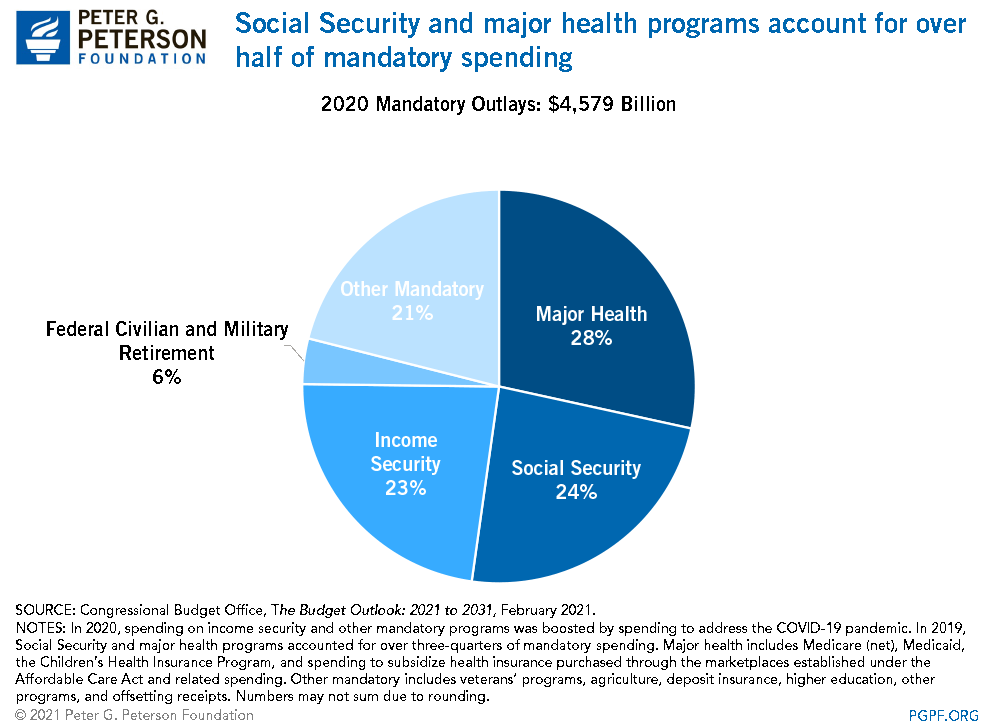
Mandatory Spending Composition
Social Security and major health programs account for over three-quarters of mandatory spending.
The search found 436 results in 0.144 seconds.

Social Security and major health programs account for over three-quarters of mandatory spending.
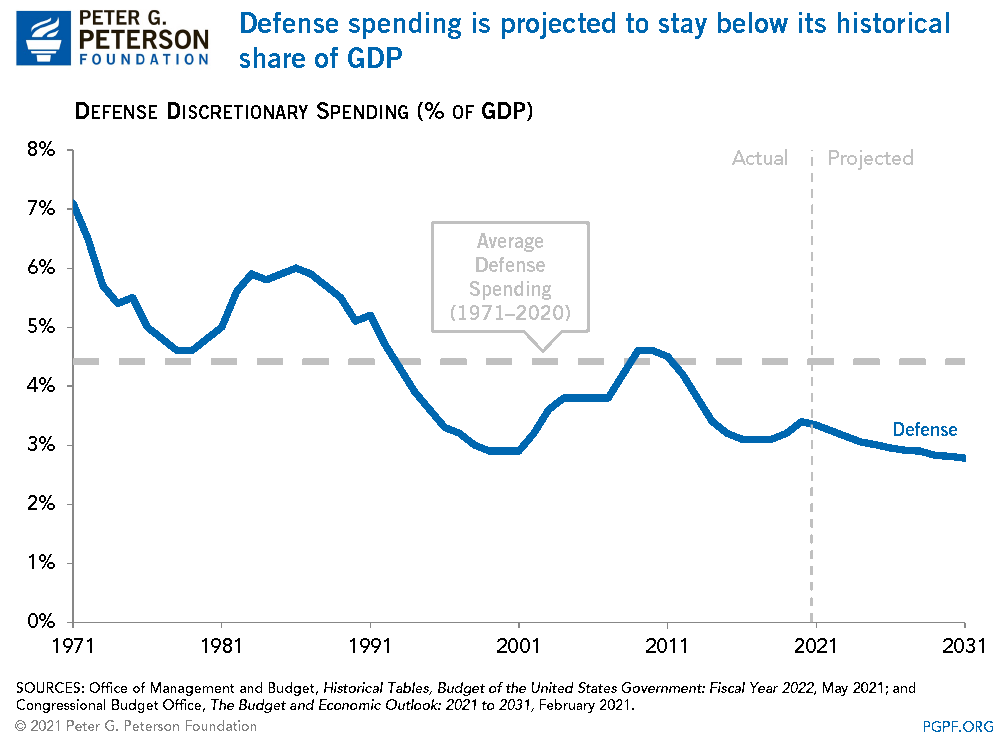
Defense spending is projected to stay below its historical share of GDP.
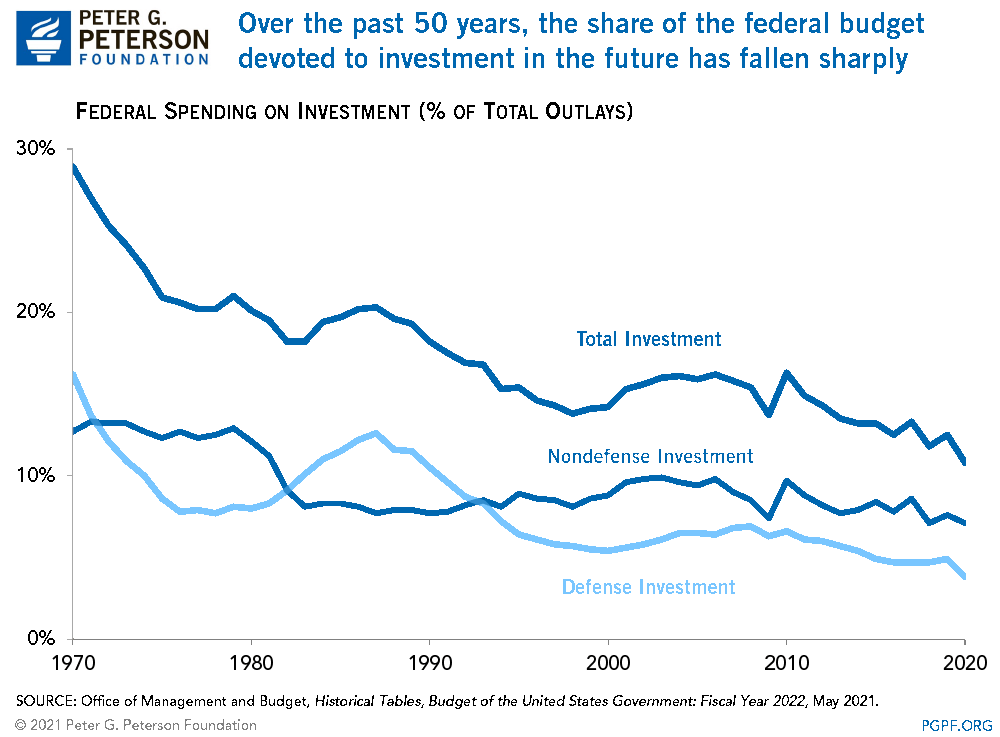
Over the past 50 years, the share of the federal budget devoted to investments in the future has fallen sharply.
https://www.pgpf.org/chart-archive/0302_declining_investment_future
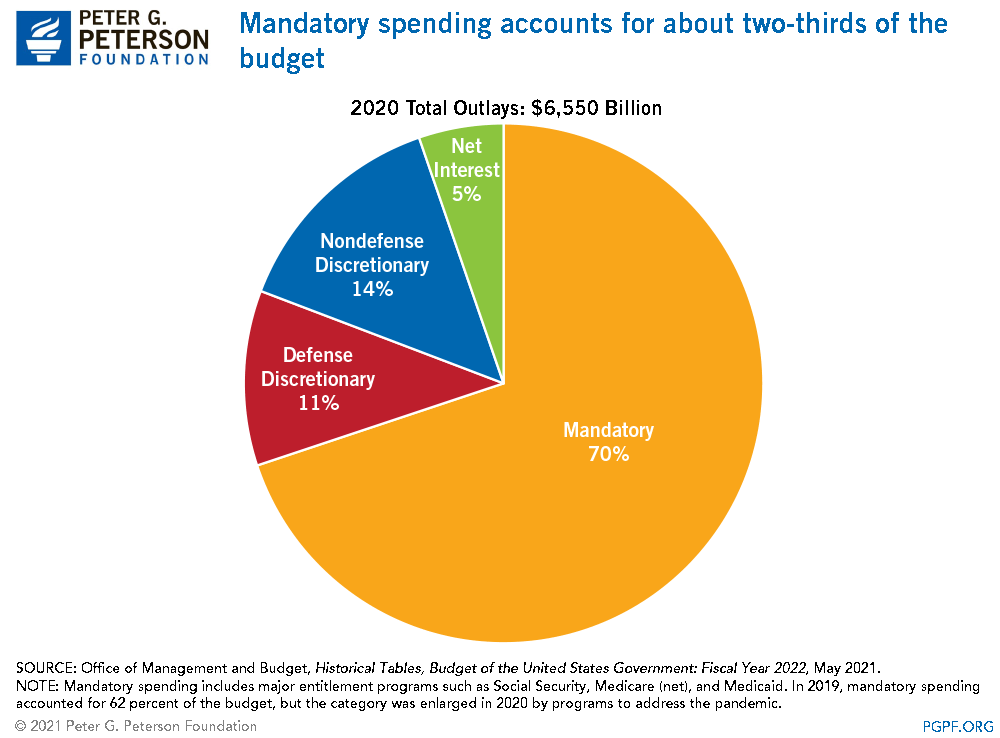
Mandatory spending accounts for about two-thirds of the budget.
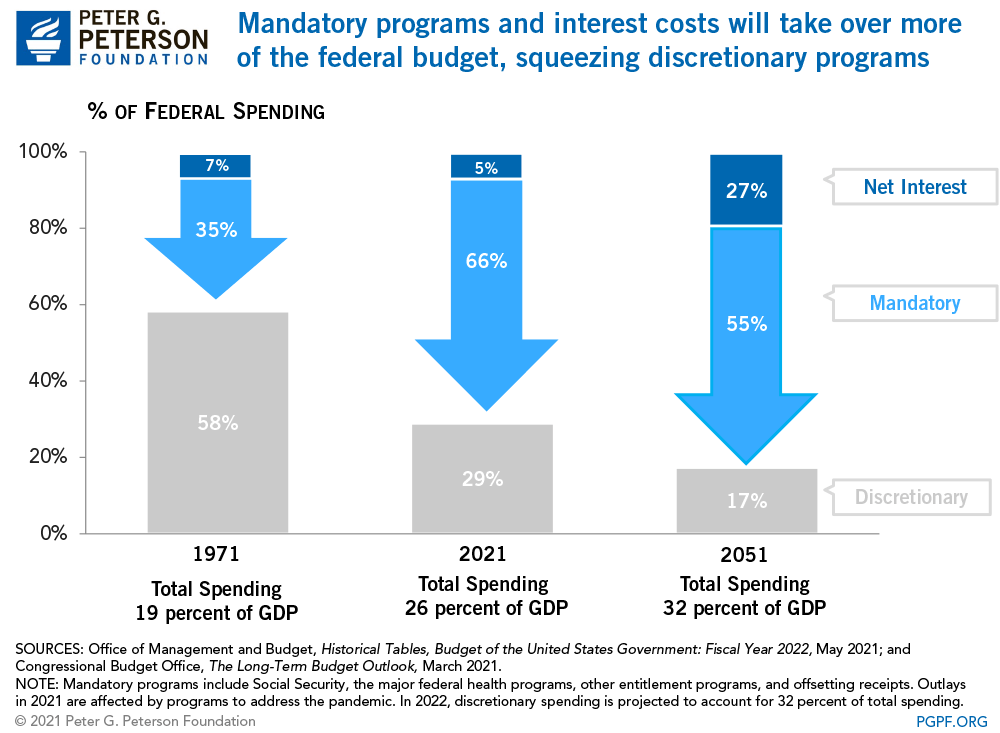
Mandatory programs and interest costs will take over more of the federal budget, squeezing discretionary programs.
https://www.pgpf.org/chart-archive/0156_mandatory_discretionary_pies
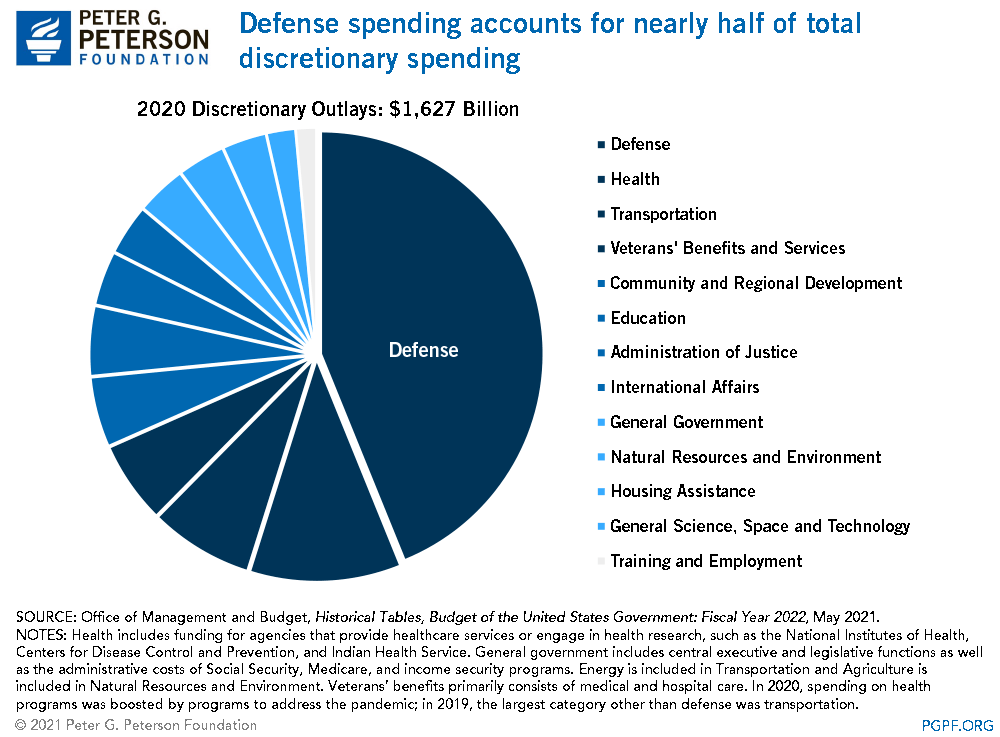
Defense spending accounts for nearly half of total discretionary spending.
https://www.pgpf.org/chart-archive/0070_discretionary_spending_categories
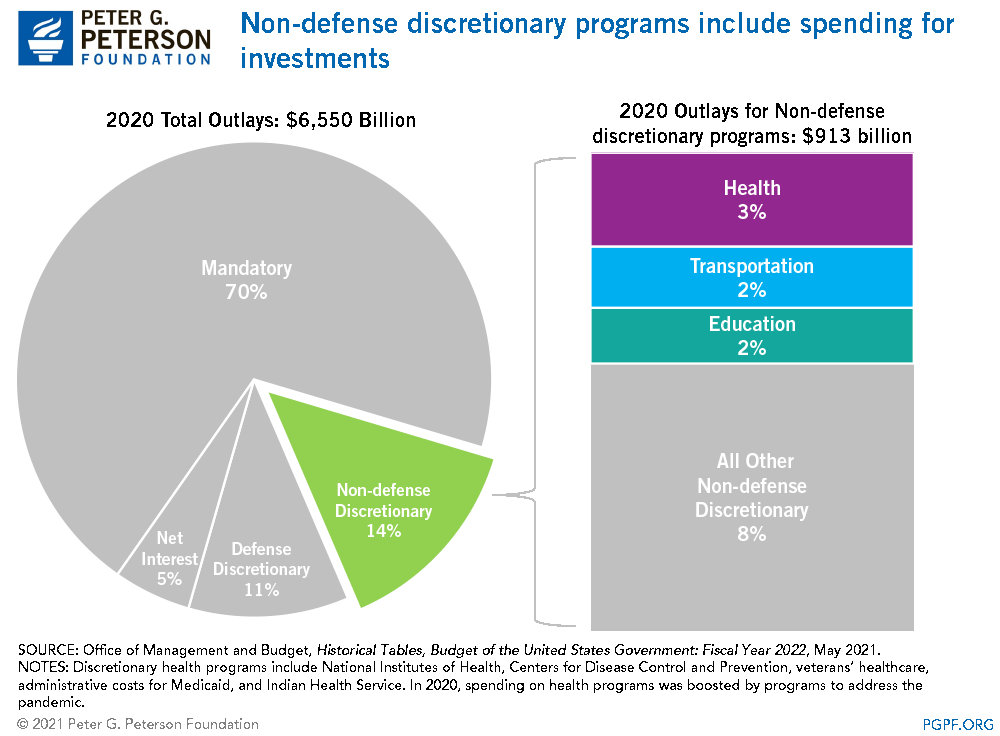
Nondefense discretionary spending includes many programs that could promote future economic growth.
https://www.pgpf.org/chart-archive/0021_discretionary-spending
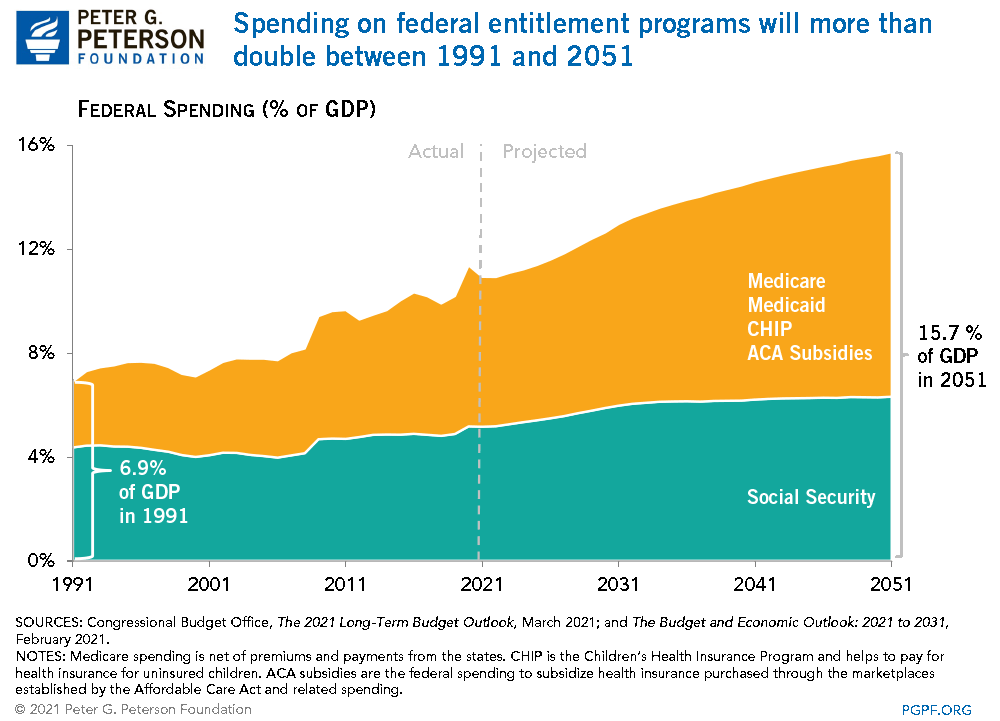
Spending on federal entitlement programs will more than double between 1991 and 2051.
https://www.pgpf.org/chart-archive/0027_entitlement-programs-proj
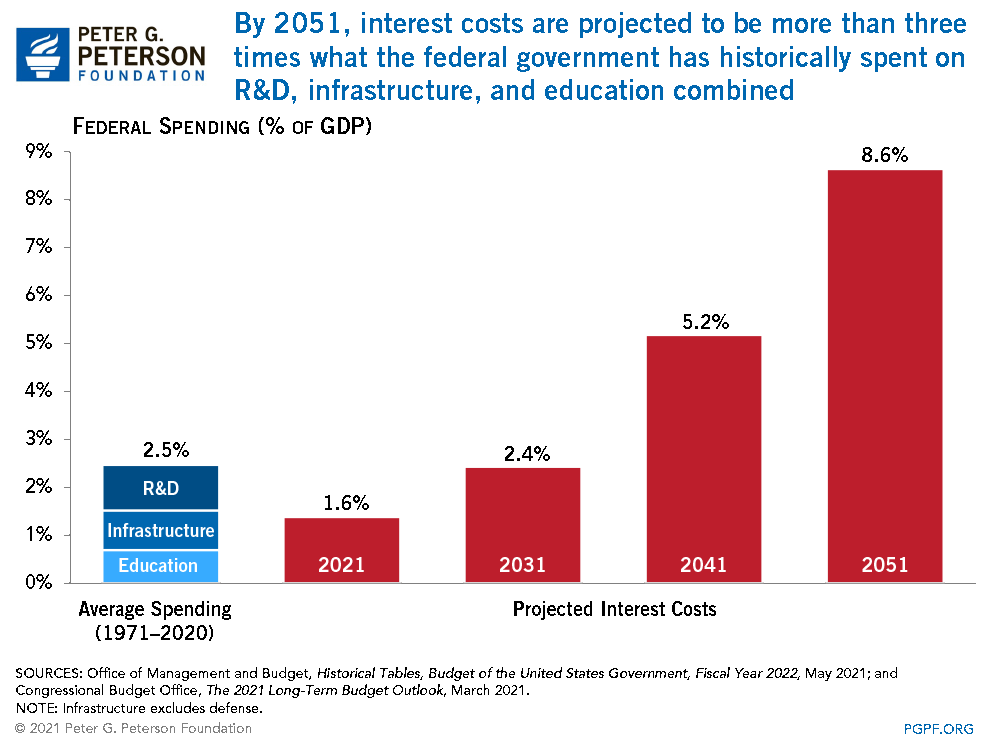
By 2051, interest costs are projected to be more than three times what the federal government has historically spent on R&D, infrastructure, and education combined.
https://www.pgpf.org/chart-archive/0005_investments_interest
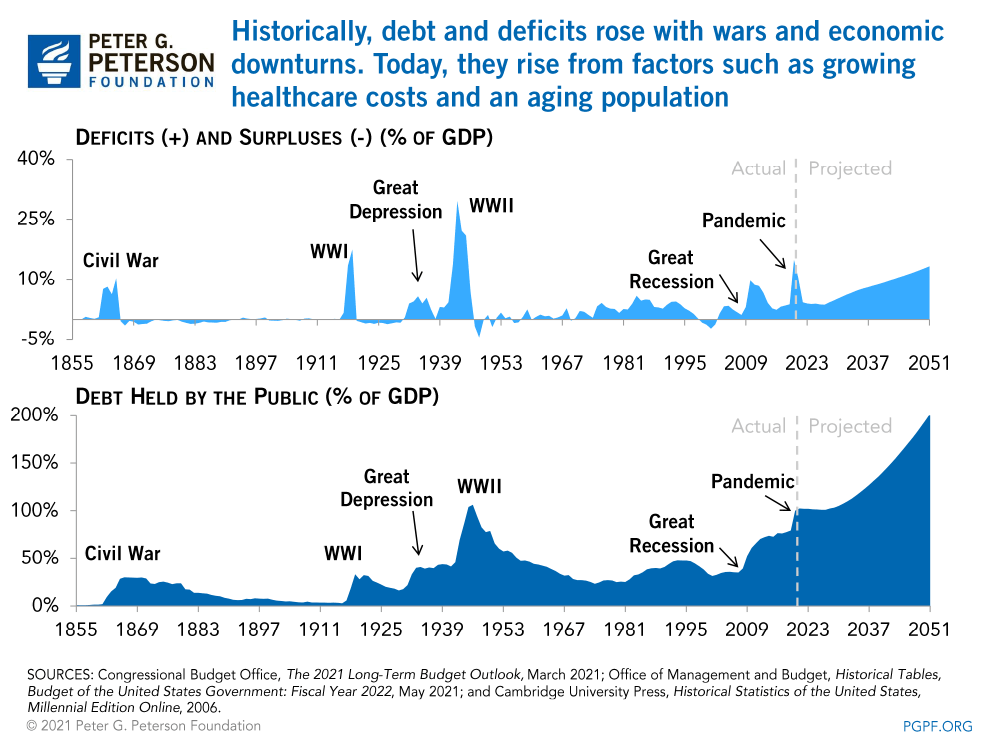
Historically, debt and deficits rose with wars and economic downturns. Today, they rise from factors such as growing healthcare costs and an aging population.